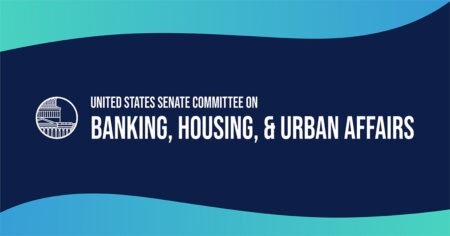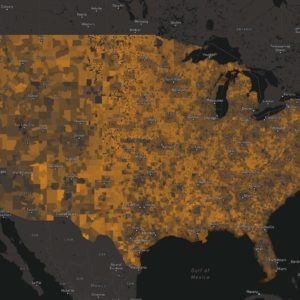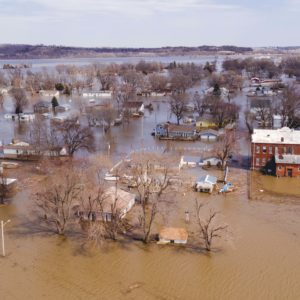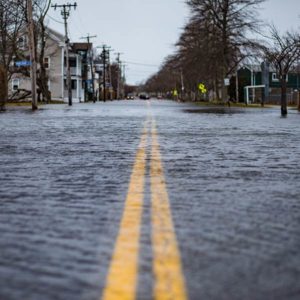More than 60% of federal resilience funding in the Bipartisan Infrastructure Law requires a local match, with an additional 13% requiring a match under certain conditions.
Requirements for matching funds have been included in federal funding programs to promote economic efficiency and ensure communities have “skin in the game.” In practice, however, they can impose insurmountable burdens on communities, creating disadvantages for rural and lower-capacity communities that cannot afford the required match.
Previous research has demonstrated how scoring criteria, the benefit-cost analysis, reimbursement models, and other application requirements create inequities in federal funding distributions. Local match requirements compound these inequities.
What is a local match?
A local match, in the simplest terms, is nonfederal cash or in-kind contributions that a grantee is required to contribute toward project costs funded by a federal grant award.
The terms “cost sharing” and “match” are often used interchangeably. Match requirements are a type of cost sharing – typically measured as a percent of project costs. Many federal grants require applicants to pledge to pay 20-30% of the total project cost. For federal awards, cash and in-kind contributions that are reasonable, necessary, and eligible can fulfill matching requirements.
Match requirements are shown to create barriers
In 2022, two U.S. Government Accountability Office reports – one on Flood Mitigation and one on Disaster Recovery – highlighted how local match requirements prevent some communities from investing in climate risk mitigation. The reports noted that communities need more flexibility with cost share requirements and suggested that one solution was to standardize, reduce, or even eliminate match requirements in climate hazard mitigation programs.
The Building Resilient Infrastructure and Communities (BRIC) program, FEMA’s flagship climate resilience grant program, has been heavily scrutinized. It aims to shift the federal focus away from reactive disaster spending and toward proactive investment in community resilience. However, evaluations of BRIC have found geographic inequities in funding distributions and suggest waiving or reducing local match requirements to better reach underserved populations.
Subscribe to our newsletter!
FEMA’s BRIC program also scores applicants higher when they can provide more than the minimum local match, further exacerbating inequities. In the FY2021 and FY2022 BRIC competitions, FEMA provided an additional five points to applicants that provided a 30% local match instead of the required 25%. The intent was to incentivize local investments, but in practice the scoring rubric made it more difficult for smaller communities to compete.

“Matching funds are one of the most discriminatory policies against disadvantaged communities, communities in persistent poverty counties, and communities in states that have very limited philanthropic investment.”
Ines Polonius, CEO of Communities Unlimited, Reimagine Rural podcast, “A visit to Washington, D.C.“
Match requirements are unrealistic for most rural and low-capacity communities
Local match requirements are typically structured as a percent of project costs, regardless of the community’s population size, wealth, or tax base. Yet climate resilience infrastructure, from flood control reservoirs to wildfire fuel breaks, can be more expensive in rural areas, where larger-scale projects are often required to protect those living in lower-density areas. When projects have fixed costs, local match requirements create disproportionate burdens on rural communities where there are fewer people to foot the bill.
Some federal programs have adjusted local matches or offered waivers to assist rural communities. For instance, the BRIC program reduces the local match to 10% for Economically Disadvantaged Rural Communities, but even this lowered match can be a barrier for many communities. Further, the criteria for local match adjustments or waivers are typically so restrictive that most rural communities fail to qualify.
Metropolitan areas with larger populations have more options for raising funding for local matches, including dipping into cash reserves and increasing utility fees spread across many rate payers. For instance, many larger communities have stormwater fees that can be leveraged to pay local match requirements associated with stormwater improvement grants. In smaller communities that may not have a stormwater fee, finding a local match for a stormwater project presents a far more significant challenge. Since rural and low-capacity communities have fewer options for raising revenue, they frequently resort to debt-financing tools such as loans and municipal bonds that carry additional costs.
Roughly half of states have passed laws that create additional barriers to generating revenue needed to meet local match requirements.
State policies that limit taxes or spending are key determinants of a community’s ability to raise revenue for a local match. These state tax and expenditure limiting policies govern how local governments can raise or spend money. Colorado, Michigan, and 31 other states have passed laws that limit the ability of local governments to either appropriate funds or collect revenue, and communities in these states have greatly restricted options for meeting grant match requirements.
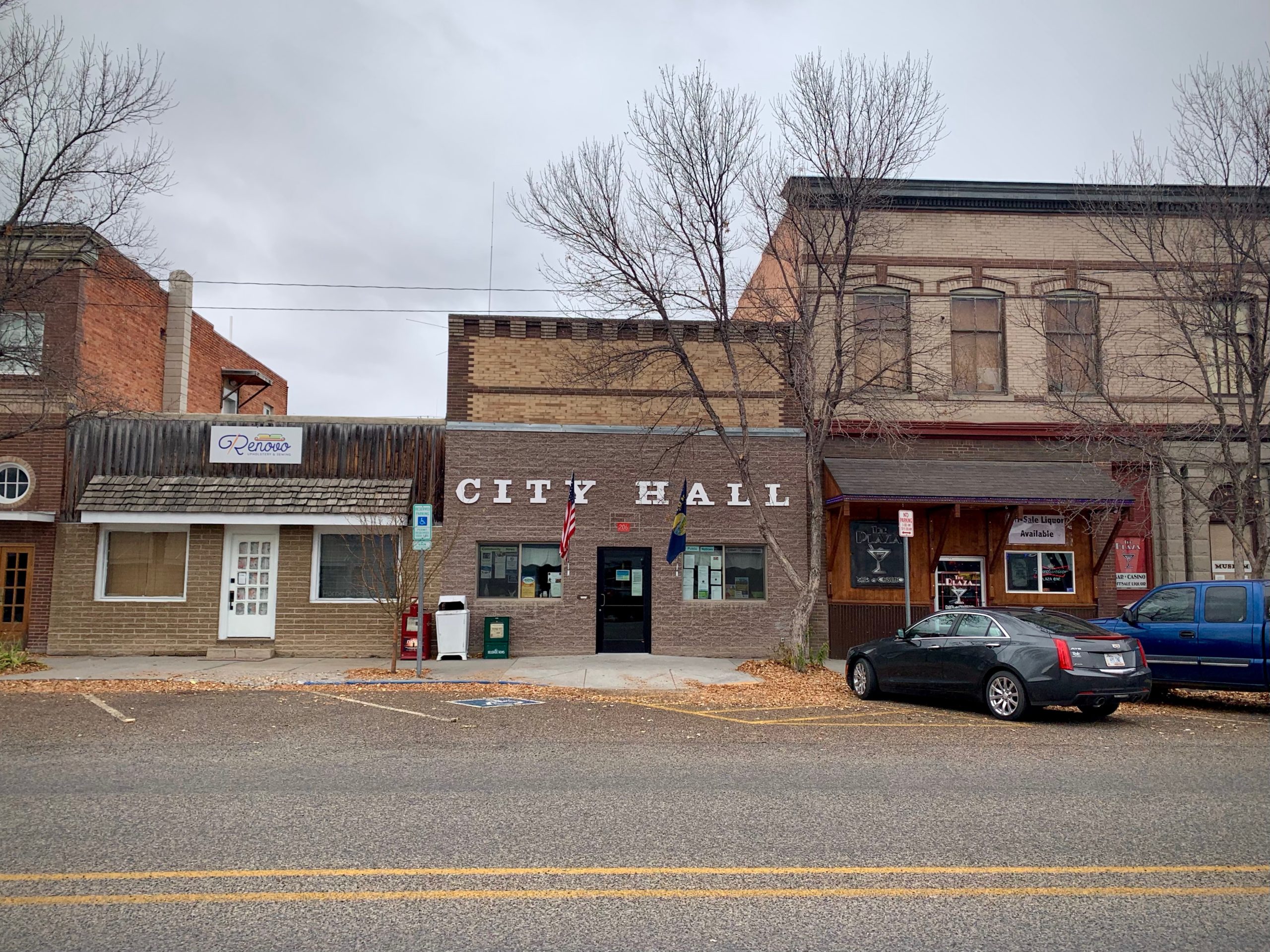
Case Study of Three Forks, MT
Securing a local match often requires upfront costs that challenge rural and low-capacity communities. The story of Three Forks, Montana, is a case in point.
The rural community of Three Forks, Montana, (population 1,991) was selected in 2022 for a $4.15 million Flood Mitigation Assistance grant from FEMA, pending final reviews and approval, to build a $5.5 million conveyance channel to reduce flood risk. However, the local match requirement has created additional expenses for the community. Three Forks is incurring expenses associated with debt financing that urban areas avoid or more easily absorb.
Three Forks’ federal grant required a 25% local match, or approximately $1.4 million. In addition to the match, the full costs of the easements associated with the project were not included in the grant proposal due to rapid increases in Montana land values following the proposal submission. To pay the required local match and easement costs, this rural community needed to raise $3 million.
Since Montana’s restrictive fiscal policies leave communities with few options for raising revenue, the community opted for a bond, to be repaid with revenue from a newly created Special Improvement District (SID).
The engineering, planning, community engagement, and legal costs associated with establishing the SID and securing the associated bond resulted in $30,600 in upfront administrative costs. Beyond this, Three Forks expects to spend approximately $846,000 in interest payments over the 20-year length of the bond, assuming it can secure a state revolving fund loan with a low (~2.5%) interest rate.
Neither Three Forks’ administrative costs for setting up the SID and bond nor the interest costs count toward local match requirements.
Solutions to local match requirements
Below we describe three options for improving access to federal resilience funding by reducing barriers associated with local match requirements.
1. Expand definitions of what counts as local match.
Communities spend time, resources, and money on planning, funding, constructing, and maintaining projects over the decades of the project’s lifespan. Allowing more costs, such as long-term maintenance expenses, to count toward the local match would both ease this barrier and acknowledge the many ways that communities have “skin in the game,” regardless of their ability to pay upfront costs.
FEMA is already expanding its timeline of acceptable costs that can meet local match requirements. Typically, costs that are incurred prior to a federal grant being awarded, including project design and grant development, cannot count toward match requirements. FEMA’s BRIC program, however, allows pre-award costs (such as developing the benefit-cost analysis or gathering environmental impact data) to be included as a line item in the grant application’s budget. This change both acknowledges the large costs of project development and allows these expenses to count toward the match.
2. Create funding at the state level to help local governments.
States can create specific funding pools to help local governments meet local match requirements. Many states have already created funds to do this. For example:
- In 2019 Texas created the Flood Infrastructure Fund and the Texas Infrastructure Resiliency Fund to provide loans, grants, and other state funding for flood mitigation projects. Within the Texas Infrastructure Resiliency Fund, the Federal Match Account provides matching funds for community flood projects.
- North Carolina pays for the local match for communities that secure federal Hazard Mitigation Grant Program funding, though it does not assist with the local match requirements for other mitigation funding sources.
- Colorado allocated $80 million of its general budget to create the Infrastructure Investment and Jobs Act Cash Fund to assist with funding state and local match requirements related to the bill. Within the fund, the Local Match grant program has specific resources to help Colorado counties, municipalities, special districts, and federally recognized tribes pay for local matches.
- Vermont created the Flood Resilient Communities Fund using American Rescue Plan Act (ARPA) funds to fund community resilience and mitigation projects, including property buyouts and watershed restoration. The program was specifically designed so that local governments can request that the state pays for the full costs.
3. Eliminate local match requirements for climate resilience funding.
Guided by Justice40 mandates and an increased attention on equity, federal agencies are working to improve how and where federal funds are distributed. Changes to local match requirements can be part of the solution. For example, the U.S. Forest Service recognized in summer 2022 that its cost share requirements have at times “created insurmountable barriers for current and potential partners and Tribes to contribute their expertise and capacity.” In response, the agency is waiving cost share requirements for programs in which the match is not required by statute.
Grant programs can also be stratified so that rural, underserved, and lower-capacity communities have segmented funding pools with different (or waived) match requirements.
FEMA programs and local match requirements are governed by the Robert T. Stafford Disaster Relief and Emergency Assistance Act. Notably, FEMA’s cost share regulations have changed over time due to both Presidential and Congressional actions, including 245 adjustments – predominantly to assist with disaster recovery – since 1986. While cost share requirements are currently in statute, policy changes are possible and needed to ensure that a more diverse set of communities can access resilience funding.

Federal grants will entrench inequities unless match requirements change
Many communities anticipate leveraging federal funds from the Bipartisan Infrastructure Law and the Inflation Reduction Act to help fund critical resilience, infrastructure, and mitigation investments. And while some funds will be distributed via block grants and allocations, the federal government continues to rely heavily on competitive grants to advance climate resilience goals.
Given the predominance of competitive federal grants for addressing climate risk and the tendency of these grants to reinforce inequities, Congress and agency leaders should strive to improve the number and success rate of proposals submitted by rural, low-capacity, and underserved communities – many of whom are on the front lines of climate change.
The three solutions presented here are already gaining momentum. Federal agencies have acknowledged the inequities imposed by local match requirements and are beginning to make changes at the policy and administrative level. Additionally, some states have introduced programs designed to ease the burden of meeting local match requirements. These actions should be quickly scaled up to ensure that communities that need resilience funding can succeed in securing it.

